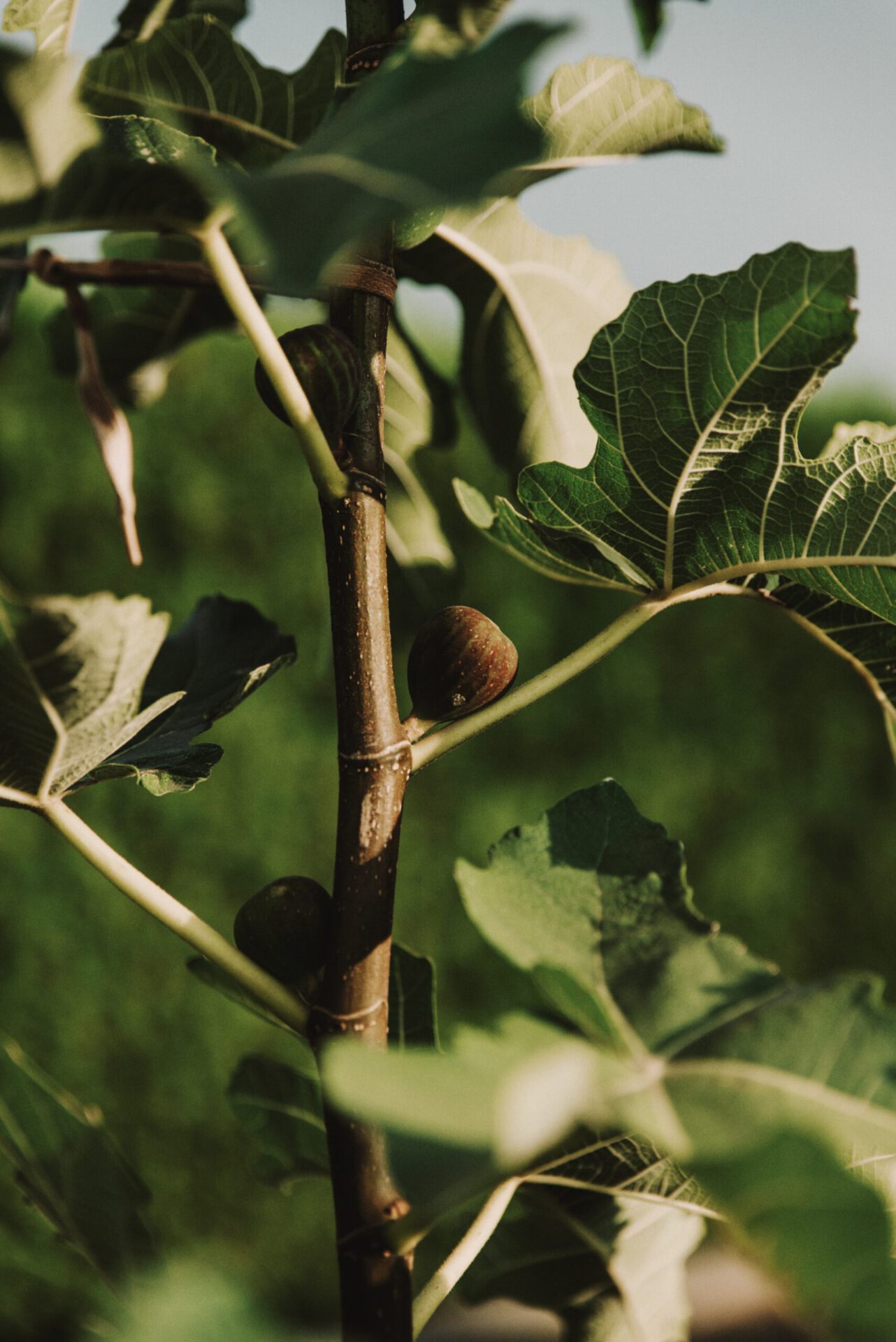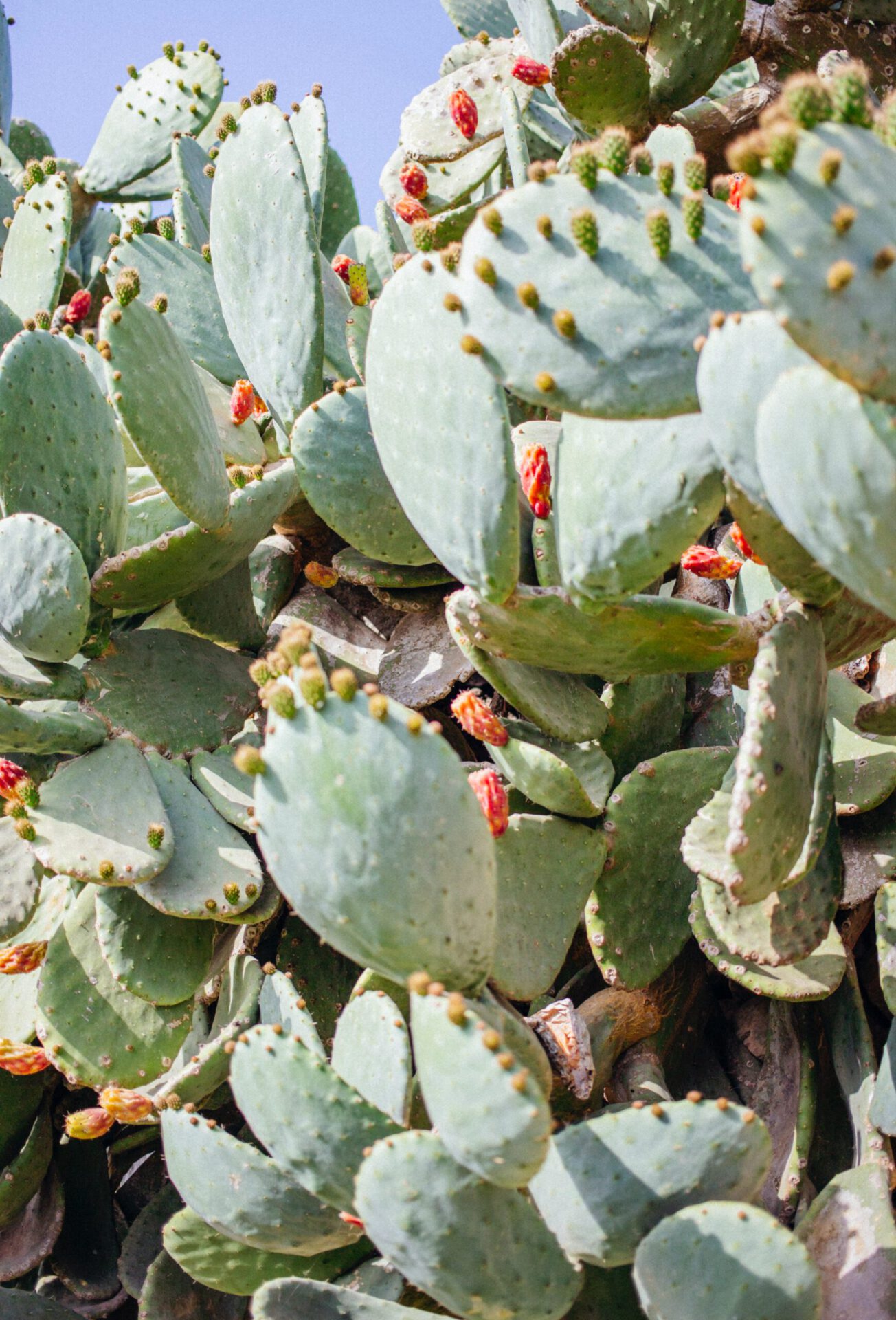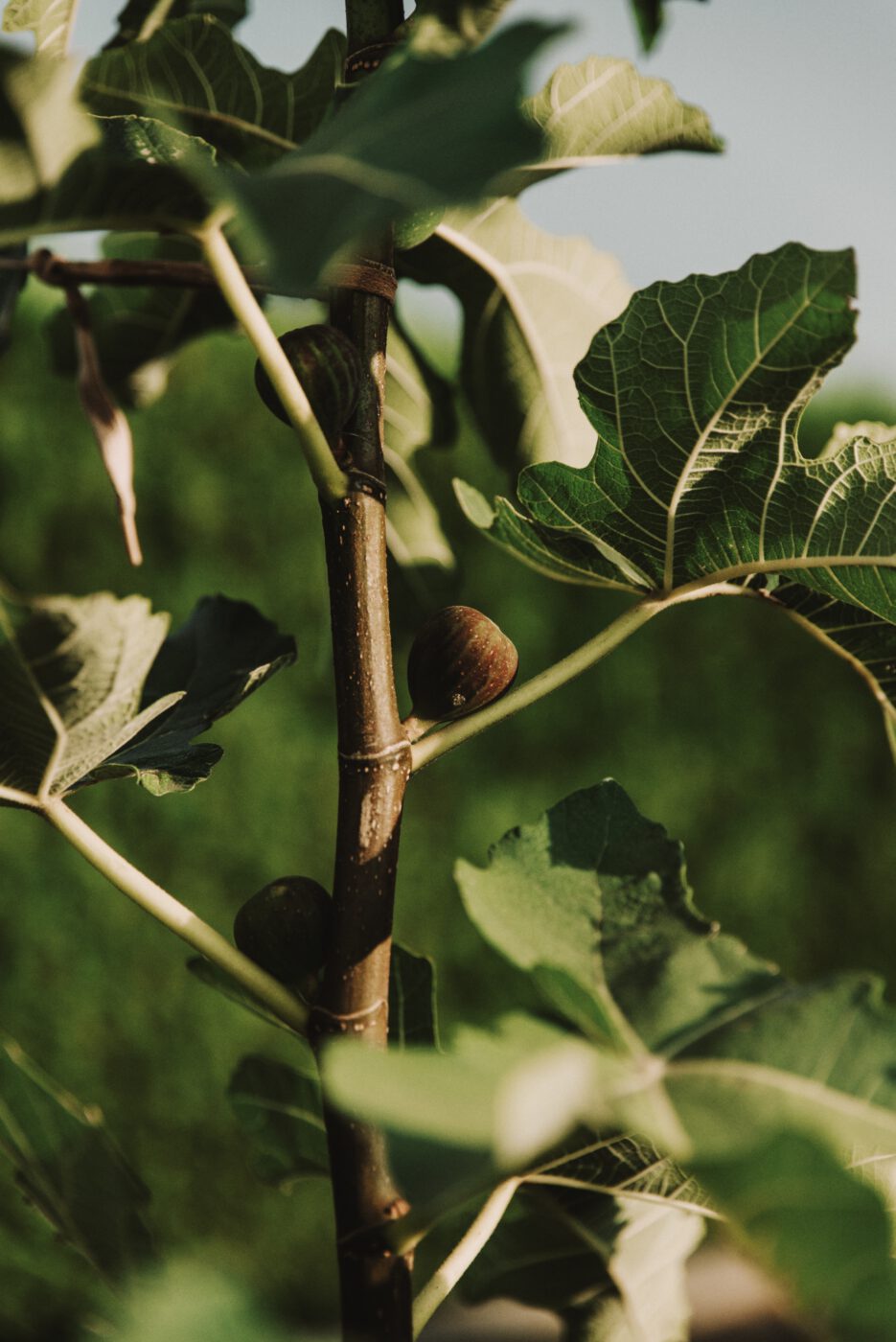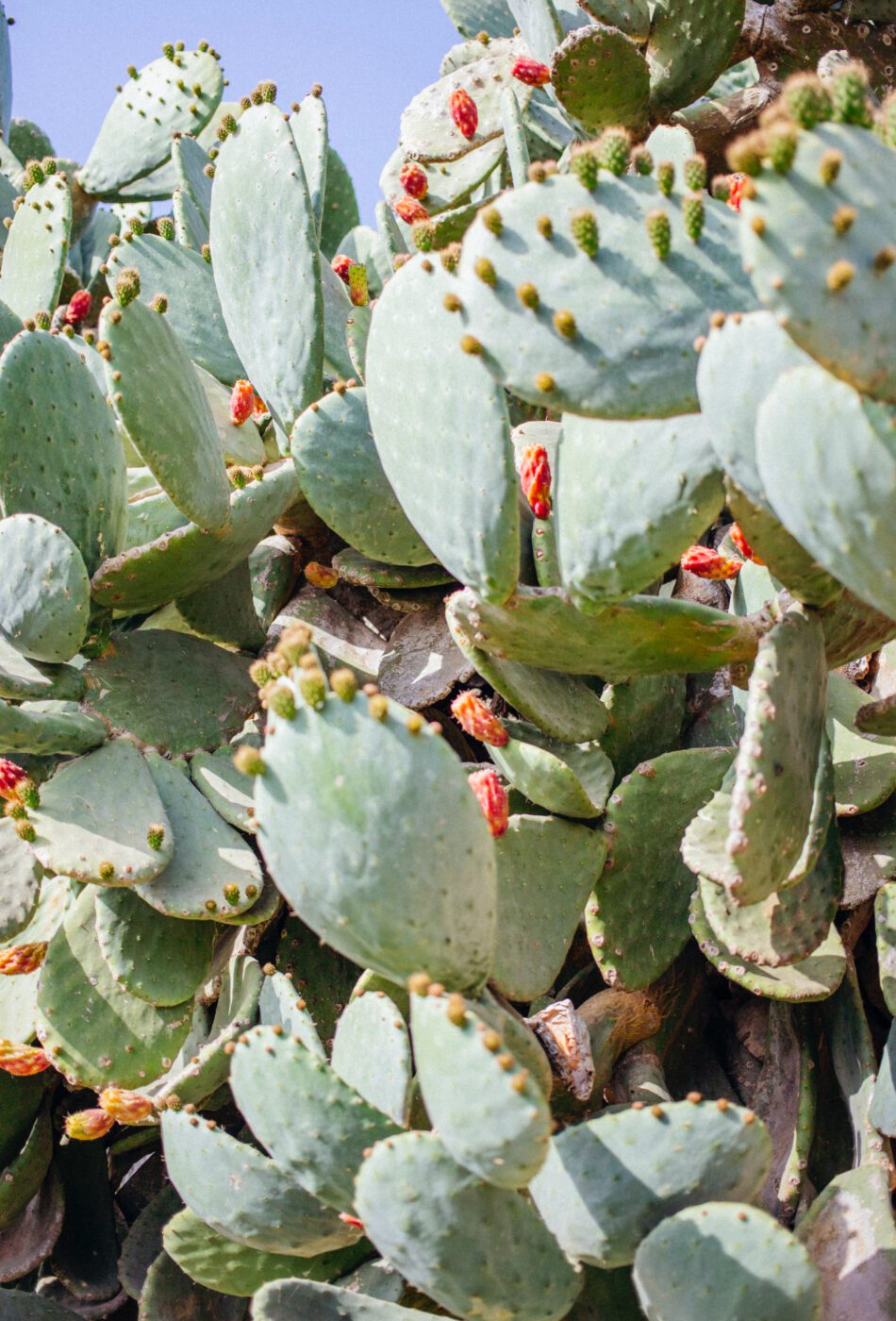“PULL OVER!” I shrieked. Will slammed the brakes of our rented Lancia Musa, spongier than one might hope for a car we planned to drive 4,532 kilometers in. We were barreling down the backroads of Calabria, somewhere outside of Tropea, a town famous for its sweet, tender red onions. While watching the scrubby olive groves fly by, I suddenly caught sight of rich purple globes: figs, the first of the season. Sofi and I jumped out in our bathing suits, snatching ten ripe ones from the bough. The three of us gobbled the figs in the car, juices dripping down our arms and smeared over our chins, soon to be washed away by the Tyrrhenian Sea. Two weeks later, fresh figs were everywhere. Along our bike ride to school in Piemonte, there was a purple fig tree on top of an embankment; we scrambled up, sliding back down on our behinds, prizes nestled safely in our hands. Up in the hills of Tuscany, we found a tall tree of green figs, more floral in flavor than the purple ones. I climbed atop a friend’s shoulders, dropping at least a quartful down to my classmates waiting below. They were the best figs I’ve ever eaten.
In the concrete jungle that’s New York City, where I grew up, fruit does not grow in the street. We bought fresh fruit at the supermarket or the Union Square farmers’ market on the days it was open. I’d only see fruit on the tree when my family and I would occasionally go apple, peach, or strawberry picking upstate. But when I moved to Italy, I found fruit everywhere: in the cities, in the countryside, in places you would never imagine. I once found a fig tree growing out of a sewage grate, a few leaves popping out the top, reaching for the sunlight. (If you are a biologist, please let me know how this is ecologically possible. Are the figs toxic?) When I visited friends in Bolzano, the capital of the semi-autonomous Alto Adige, I found apple trees on every mountainside, sometimes wild, sometimes cultivated for the cider industry or apfelstrudel. In November, I moved to the baroque town of Modica in Sicily’s southeast for an internship. Modica is built along two sides of a steep ravine. I lived on the west side, in a tangle of lengthy staircases and streets so narrow that Google Maps was completely useless. On nice days, I wandered this maze, walking up and down staircases until I was spat back out on Corso Umberto, the main street that was once a river flowing through the middle of the ravine. One day, I got completely lost, turning corners only to find myself at dead end after dead end; until I happened upon one cul de sac, which was decorated with the most beautiful kumquat tree I’d ever seen. It was huge, almost neon orange from the many plump citrus lining its branches. (I’ve learned since that this tree is an aberration, as the species prefers a quick-draining home and is mainly grown in pots, rather than in the ground.) I picked dozens, eating some directly from the tree and tossing the rest straight into my tote bag. From then on, every few days, I took a detour to my kumquat tree, somehow no longer getting lost in Modica’s labyrinth. At the bottom of my tote, there was always a stray kumquat or two.

Not all fruit-picking missions are as romantic as these, however. On that same road trip in Calabria, we were enchanted by the magenta prickly pears attached to the paddle-shaped cacti that grow in hundreds alongside the region’s roads and rocky cliffs. Anyone who’s been to Calabria and seen the sheer numbers of what in Italian are called fichi d’India may be shocked to learn that they’re not native to the region, Italy, or even India. When Christopher Columbus encountered prickly pears in the New World, mistakenly believing he was in India, he named them “Indian figs”. The plant was first brought to Italy in the 15th or 16th century when Sicily was under Spanish rule. Native to what is now Mexico, prickly pears are a superlative host for cochineal, a parasitic insect used to make red dye (also known as carmine); the colonizers wanted to develop a dye industry in Italy. This deep red pigment was also used to make Alchermes, the liqueur into which sponge cake or ladyfingers are dipped for the classic Italian dessert zuppa inglese.
When we finally worked up the courage to approach the thorny fruit, we grabbed one with Sofi’s Decathlon microfiber towel over our hands to protect them. It didn’t work. Our hands were speared by hundreds of the paper-thin and painful bristles. We spent the rest of the car ride pulling them out of our palms and tossing them out the window. The Decathlon towel was in even worse shape and ended up being tossed too. On another trip, this time to Pompeii, we found a pomegranate tree near the Villa of Diomedes. After cracking the crown-topped fruits open on some ancient structure, we took huge mouthfuls of the sourest fruit I’ve eaten in my life. Our faces simultaneously contorted into wrinkled puckers. I’ve also picked countless numbers of wild grapes already on their way to wine. This is not a pleasant experience either.
The tastes of found fruit now map the places I’ve visited and my memories of those trips, more than the routes I took or even the spongy brakes of our Lancia. (Perhaps it’s a neurological vestige of an evolutionary gathering role.) And these fruit-mapped memories are always happy/funny/comforting. Something so small–picking fruit straight from the tree–makes me so happy, disproportionately so. But why? Is it because of some mysterious psychological mechanism? (Seriously, trees have been shown to improve emotional and mental wellbeing. Statistically, hospital patients who have a view of trees recover more quickly than those who don’t.) Or because in a world full of plastic and packaging, it’s easy to forget where food actually comes from? Or, as one friend suggested, that I’m so used to a world of parceled private land that it’s refreshing to find something truly in the commons? I think it might be all of these, some more consciously than others. But what I might love most of all is that picking fruit in the street–there for me and for anyone else who wants it–reaffirms the spirit of Italy. In Italy, generosity, especially in the form of food, pours out of every place, person, and slice of arable land (or, occasionally, a sewer). I’ve traveled around Italy for a year now, often to places where I don’t know a single soul. Yet hardly ever have I sat down to dinner alone. Upon learning that I’ve just arrived in [insert any Italian town here], the locals invite me for aperitivo or home-cooked meals, over which we share our cultures and customs, only slightly hindered by any language barriers. There’s always an arm, or a branch, reaching out and encouraging me: mangia, mangia. Conviviality is Italy’s lifeblood–and apparently it fertilizes the country’s fruit trees too.






